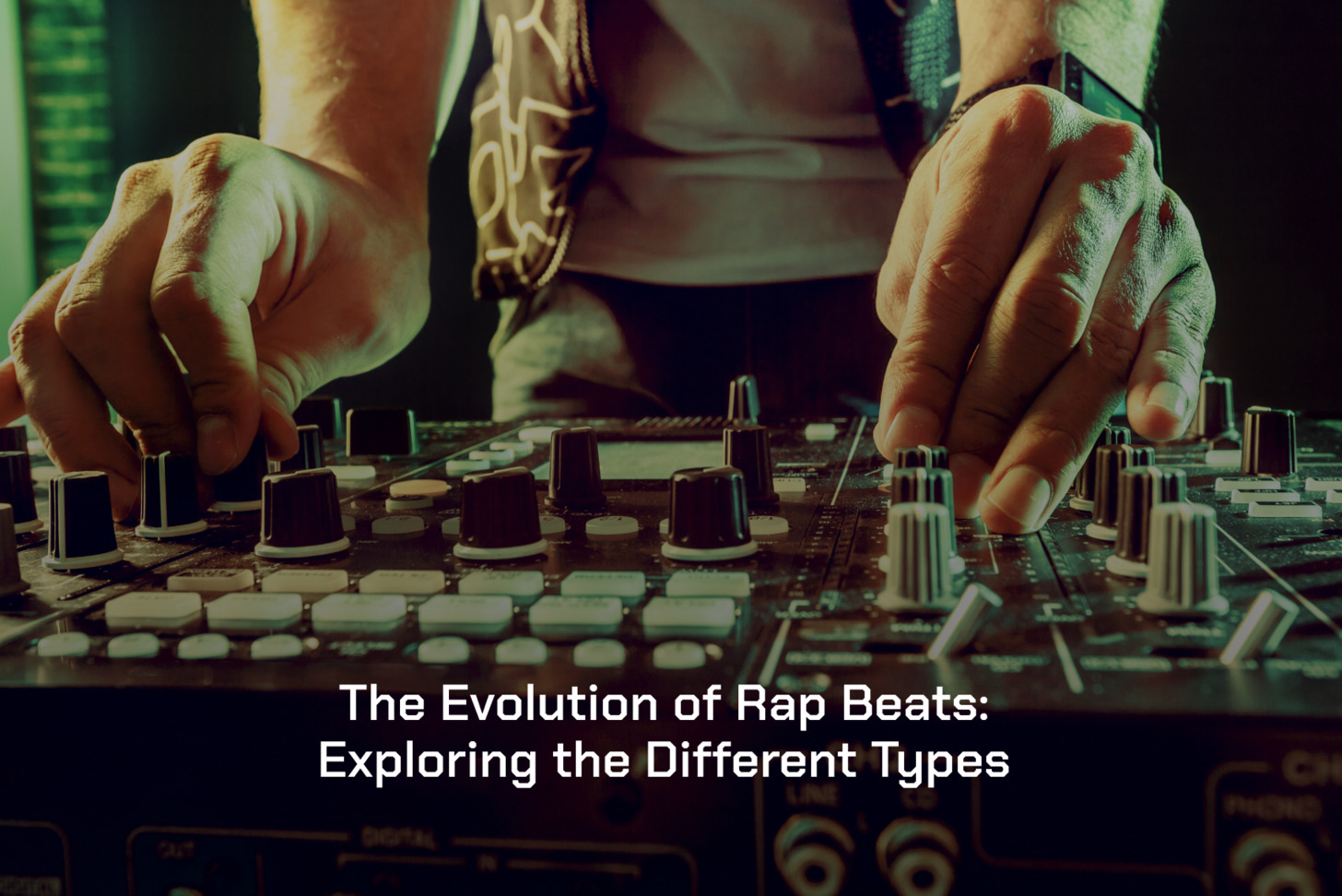The landscape of rap beats has undergone a remarkable transformation, evolving with each new wave of artists and producers. From the gritty pulse of old-school tracks to the polished rhythms that dominate today’s charts, this genre offers diverse styles for every listener. Aspiring musicians often find their spark through simple means—a grandfather’s radio or an improvised antenna—and from such humble beginnings grow into connoisseurs who not only enjoy but also critique and influence hip-hop culture.
Artists like Outkast and 2Pac have left an indelible mark on beat-making, inspiring newcomers eager to shape the future soundscapes of rap.
Origins of Rap: The Classic Breakbeat Era
The origins of rap music date back to the 1970s in New York City, where block parties became hotbeds for new sounds. DJs like Kool Herc shifted dance crowds with breakbeats from funk and soul records. They looped these breaks, creating a continuous rhythmic foundation that was perfect for dancing.
It’s here that emceeing took shape; artists spoke over beats originally to hype up the crowd but soon turned into lyrical rhymes. Inspired by this fresh style, other budding talents added their twist to create raps about everyday life and struggles—this artful storytelling set against pulsing beats caught on fast. The breakbeat era laid down Rap’s framework, which thrived through improvisation—a central piece rooting modern freestyle rap.
Read also: Key Players: 8 Rap & Hip Hop Labels Every Artist Should Know About
From Boom Bap to Hardcore Hip-Hop
Modern rap music thrives on the talent of diverse creators. Producers, like Mars Beats with his track “Questions,” set the stage for hits such as “Tweakin’ Together” to skyrocket in popularity online. The song, emblematic of cloud and trap mix styles, showcases Betherula’s versatile approach to hip-hop, blending playful lyrics with spaced-out synths that resonate deeply among listeners.
Artists move beyond traditional roles; take Yachty, who stretches from mumble rap into psychedelic rock while nurturing rising stars. His work reflects a commitment not only to personal growth but also to fostering new talent within the scene. Hip-hop constantly evolves through these vibrant contributions, hinting at even richer textures coming soon from young talents shaping its future landscape.
The G-Funk Wave and Synth Bass Lines
The G-Funk era redefined rap with its synth bass lines and smooth rhythms. Pioneers like Dre, known for minimal sampling, favored live instruments to create fresh sounds. This wave embraced a more relaxed lyrical style compared to gangsta rap’s intensity.
Fans can often hear the high-pitched sawwave synthesizer blending with mellow grooves in tracks such as “Dez Nuts.” Such elements were crucial in making songs like DJ Quik’s “Tonite” resonate deeply within hip-hop culture. G-funk classics often included orchestral elements or female backup singers. These additions brought depth to the relaxed beats of California artists, from Snoop Doggy Dogg to Nate Dogg and Warren G.
Ice Cube embraced this style, using old funk samples to keep a unique West Coast sound in “Check Yourself.”
Rise of the Dirty South’s Kicks
Dirty South’s kicks have transformed rap beats with a distinct sound that combines various styles, like gangsta rap and Miami bass. These rhythms often pair hardcore lyrics over slower-paced yet soulful melodies catering to southern party scenes. Crunk emerged in Atlanta as an evolution of this sound; its fast tempo and club-ready choruses were pioneered by artists such as Lil Jon.
As the trend evolved, so did subgenres like snap hip hop—a milder derivation from Crunk’s intensity—and today’s pervasive trap music, which stands atop US charts across genres. Pioneers on SoundCloud platforms have helped spread these sounds globally—Trap now permeates pop, K-pop, and even country tunes—with offshoots including Emo Rap and Lo-Fi gaining traction among listeners keen for fresh takes on established formulae. Southern influence is undeniable within hip-hop culture due largely to consistent innovation from artists who push boundaries while staying true to their roots and creating distinctly high-quality tracks.
East Coast Renaissance: Sampling Soulful Melodies
The East Coast Renaissance saw rap beats bloom as DJs spun soulful melodies into the mix. Sampling, a craft at heart, took segments of older tracks and weaved them anew for hip-hop’s fabric. This skill sends respect to roots while shaping complex layers in today’s hits.
Think Kanye West’s “Stronger” or Rihanna’s swaying rhythms; they merge then with now. Crafting samples isn’t just play; there’s art in flipping tunes beyond their first form through chopping and effects—a producer’s signature touch molded by tools like Serato Sample. Yet ethical lines bind this creative freedom; permission is key lest legal woes arise.
Clearing cuts guarantee that artists rightfully mingle past notes within fresh anthems. Sampling vows to evolve still—as technology advances, so do possibilities untapped before us—for an industry where honoring legacy means shaping its future mindfully.
Mid-2000s Snap and Trap Beat Influence
In the mid-2000s, snap, and trap beats took hip-hop’s pulse to fresh heights. Snap music emerged with a laid-back vibe; think finger snaps plus sparse snares, creating rhythmic skeletons that had clubs moving with minimal effort. Contrastingly, trap beatmakers laced their tracks thickly—dense layers of hi-hats rattled like machine gunfire alongside booming 808 kicks that echoed through Southern streets.
These sounds shaped an era where lyricists rode over loops as muscularly as they were melodic. The snap-clad anthems usually kept tales light-hearted, while trapped-in-the-closet rappers often painted darker pictures—a reflection of lives entangled in hardship but spit slickly enough to turn any head-bobber reflective for just a moment. Producers during this time didn’t shy away from technology either; software advanced rapidly, allowing them to chop samples finely or cook up drum patterns unheard of before.
This sonic evolution opened doors wide for creativity unbounded by past production limits.
Hybrid Beats: Merging Genres in Modern Rap
In today’s rap scene, hybrid beats stand out by fusing elements from distinct genres. Producers now blend old-school hip-hop sample-based grooves with modern trap’s booming 808s and quick hi-hats. This fresh mix gives life a sound rich in diversity yet rooted in tradition.
Modern rap thrives on such mergers, where fast-paced trap rhythms meet the simplicity of old-school flows. Artists innovate within set patterns, creating rhyme schemes that play with triplet cadences common in both traditional forms and new-age styles. Genres like country-trap vividly showcase this evolution.
They draw from Atlanta’s trap sounds and nod to Nashville’s pop-country twang, a style hits like “Old Town Road” have immortalized. Mumble rap further exemplifies genre-merging as it retains the rhythmic intricacies of its forebearers but pushes lyrical clarity into the background—an offshoot capturing attention despite mixed reactions for its unique delivery approach. Modern hybridization expands musical landscapes and bridges past and present influences.
It forms a future path for beat-making artistry that respects foundational roots, allowing producers to actualize visions once limited by technology or genre confines, thanks to advanced digital audio workspaces (DAWs).
Read also: Sound Waves To Success: Navigating Music Distribution In Rap & Hip Hop’s Digital Era
Global Impact on Today’s Diverse Soundscapes
Today’s diverse soundscapes owe much to hip-hop. This genre, born in the Bronx, New York City, during the ’70s—a time ripe with struggle—gave voice to marginalized groups through beats and potent lyrics. Hip-hop has grown far beyond its urban origins; it influences global fashion trends, inspires various dance styles like breakdancing, and powers political action for social justice.
The DJ’s role remains pivotal as they spin records into unique audio experiences that engage listeners worldwide. Breakbeats devised by pioneers like Kool Herc laid the foundation for DJs who continue evolving these sounds today. As a globally embraced art form representing freedom of expression and unity across cultures via rhythmical storytelling—from Tokyo streets to Nairobi slums—it demonstrates no bounds geographically or culturally.
With each rap beat resonating around our planet, we witness an ongoing testament to this dynamic movement’s ability not just to entertain but also to connect humanity, regardless of location or background.
Experimental Sounds Shaping Future Rap Rhythms
Rap music now thrives on bold experiments. Producers forge ahead with sounds that once seemed off-limits. Deep, throbbing bass meets high-pitched electronic beeps in a dance of contrast.
Novel rhythms are born from this blend; odd time signatures and syncopated beats challenge the norm. Some craft drums from digital static or even silence, turning gaps into rhythmic tools. These elements shape an unpredictable auditory journey for listeners, yet they resonate, driving rap’s evolution forward.
Artists match these innovative beats with equally unconventional flows—rapid-fire one moment and languid the next—adapting to the complex layers underneath their rhymes. As such soundscapes gain traction, they push mainstream rap out of its comfort zone. Straying far from simple loops or predictable patterns, the new era prioritizes creativity over conformity within its pulse.
The landscape of rap beats has seen a remarkable evolution. From the basic loops of old-school tracks to today’s complex, multi-layered rhythms, variety abounds. You can visit the JBZ beats with fresh sounds that honor the genre’s roots while pushing into new sonic territories.
The diverse types reflect an industry that both shapes and adapts to cultural currents—a dynamic world where beat-making is as vital as lyricism in crafting hit songs.



